On the accuracy of Russian ships in Tsushima and Japanese ships at Shantung
In the previous article, due to my modest abilities, I clarified the data of the respected V. Polomoshnov on hits on Russian ships in the battle of Shantung. We are talking exclusively about hits that were achieved by the main forces of the Japanese, that is, 4 battleships and 2 armored cruisers of the 1st combat detachment, as well as the Yakumo that joined them in the 2nd phase of the battle.
In total, according to my data, there were 37 hits in the 1st phase and 104 hits in the 2nd.
How were the Russian ships able to answer?
The performance of the 1st Pacific
In total, according to V. Polomoshnov, the Japanese fleet received 37–38 Russian shells.
However, these statistics include hits on Izumi, Chin-Yen, and destroyers, which are not part of the main force's battle. According to V. Polomoshnov, only 1 shells hit the ships of the 31st combat detachment H. Togo and "Yakumo". From the descriptions given by him, it can be assumed that the maximum number of hits on the ships of the main forces of the Japanese did not exceed 33.
What conclusions can be drawn from the above?
It is quite obvious that in terms of the number of hits, the Japanese squadron won with a devastating score.
But here's what's interesting ...
While the battle was fought at long distances, the Russian squadron responded with one hit to about 3 Japanese ones: 37/12 = 2,91. Perhaps this ratio is even less if some of the shells, the time of impact of which was not recorded, hit the Japanese ships in the 1st phase.
But even if all such hits are attributed to the 2nd phase, then the ratio of Russian and Japanese hits in it will be 5,2 - one Russian shell for five Japanese shells!
It turns out that, depending on when exactly "Sikishima" and "Kasuga" received Russian "goodies", the ratio of Russian and Japanese hits looked like this.
1. In the 1st phase (37 Japanese hits and from 12 to 17 Russians) - 2–2,9 Japanese hits per Russian.
2. In the 2nd phase (104 Japanese hits and from 14 to 20 Russians) - 5,2-7,4 Japanese hits per Russian
Assuming that most of the hits on the Sikishima and Kasuga still belong to the 2nd phase, we see that the short battle did not promise anything good to the 1st Pacific Squadron, which received one round "The Japanese have about 5-6 hits in response.
Oddly enough, but for V.K.Witgeft it would be just better to stay as far away from the ships of H. damage to the Japanese squadron was greater (37 hit in response to 104-1 Japanese).
Cusima
I will try to compare the effectiveness and accuracy of Russian fire in the 1st phase of the Tsushima battle and Japanese fire in the 2nd phase of the battle at Shantung.
The choice may seem strange, but ...
The fact is that the conditions in which these combat episodes took place are to a certain extent similar. At the beginning of the phases, the Japanese did not have serious injuries, the Russians did not have them at all. Distances were comparable, and even if they were marginally shorter in Tsushima, this was more than offset by worse visibility. Finally, the movement of the squadrons was somewhat similar - at the beginning of the battle, both the Russians and the Japanese were in the position of catching up and had to shoot with their port sides at targets located on the left-front.
It is known that in the 1st phase of the Tsushima battle, Russian ships achieved at least 62 hits on the Japanese.
Of course, 62 is noticeably less than 104 hits on Russian ships in the 2nd phase of the battle at Shantung. In addition, do not forget that the Japanese in the 2nd phase fought 7 ships in the line, and the Russian fleet in Tsushima - 12. It would seem that this irrefutably testifies to the fact that the artillerymen of ZP Rozhdestvensky could not come close to the effectiveness of the 1st combat detachment of H. Togo together with "Yakumo".
But is it?
Ship-watch
If one person worked on one personal plot, and two people worked on the next one, it may seem that twice as much work has been done on the next one. But this will be correct only if they worked for the same time. Well, and if their performance is the same, of course.
But if a person who worked alone bent over the beds for 8 hours, and his neighbors, after working for a couple of hours, sat down to drink, then 8 man-hours were worked in the first section, and only 4. And this means that the work in the first section, twice as much was done, although there were half as many people working there.
Let's try to apply the same approach to the Japanese squadron at Shantung and the main Russian forces in Tsushima.
Regarding the 2nd phase of the battle at Shantung, there is some uncertainty, when exactly did it start and when did it end?
The reports of our sailors have different interpretations, but for the most part they indicate 16: 30-16: 45.
As for the end of the battle of the main forces, the respected V. Polomoshnov designated it at about 19:00, but how true is this?
The assessments of the participants in the battle are contradictory.
For example, Schensnovich indicates that the 2nd phase of the battle (in his calculations it was the third) lasted 2 hours and 50 minutes, but he has a lot of oddities with time - for example, he believes that the phase began at 15:40 and ended at 18: thirty.
When the "Tsarevich" was out of order, the "Retvizan" rushed towards the Japanese squadron, and it was at about 18:15 (von Essen's report), then, having walked about 10 minutes in the direction of the enemy, "Retvizan turned around and retreated."
Thus, the intense battle of the main forces could not have ended before 18:30. It is also known that after 18:30 Japanese battleships fired on Russian ships - this is stated in the report of the senior officer of the "Tsarevich".
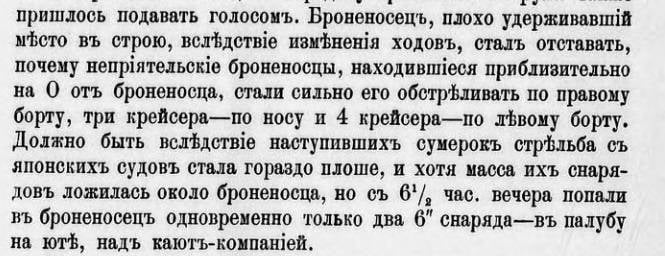
In other words, it would not be a mistake to assume that the 2nd phase of the battle at Shantung lasted at least 2 hours, but possibly a little more, that is, from 2 to 2,5 hours.
On the part of the main forces of the Japanese, 6 warships of the 1st Combat Detachment and the Yakumo took part in it.
Thus, 7 ships fought for a minimum of 2 hours, from 16:45 to 18:45, which gives a total of 14 ship-hours.
We now turn to the Russian ships.
In total, the 1st phase of the Tsushima battle lasted 82 minutes, from 13:49 to 15:12.
But "Oslyabya" already at 14:15 had a strong roll and was hardly able to conduct effective fire, so it took part in the battle for no more than 26 minutes.
At 14:20 Borodino was knocked out, where he returned 20 minutes later, but out of order he could hardly conduct any effective battle.
At 14:26 the flagship "Prince Suvorov" went out of action, and at 14:40 - "Alexander III" - the time during which they still held out and could inflict some damage on the enemy was approximately 37 and 51 minutes, respectively.
Consequently, only 8 Russian ships of the line fought during the entire 82 minutes of the 1st phase of the Tsushima battle, thereby conquering 656 ship-minutes. The other four ships - "Oslyabya", "Suvorov", "Alexander III" and "Borodino" - participated in it for 26, 37, 51 and 62 minutes, respectively.
In total, the Russian squadron in the 1st phase of Tsushima fought 832 ship-minutes, that is, 13,87 ship-hours.
Despite the fact that in the 2nd phase of Shantung, the Japanese fought 7 ships, and in our 1st phase of Tsushima - 12, taking into account the duration of the phase and the failure of a part of the Russian ships, "recaptured" by the ship-hours from the Russian squadron turns out to be less than that of the Japanese: 13,87 against at least 14.
About hits
Since 7 Japanese ships achieved 104 hits against the Russians, we can say that, on average, each of them achieved 2 hits during the 14,87nd phase.
For the Russian squadron in Tsushima, this figure is 62/12 = 5,17. Almost triple superiority, but this does not take into account the time factor of firing.
But if we recalculate the average number of hits on a ship-hour (that is, how many hits on average were given by one fighting ship during an hour), then the ratio will be completely different: 104/14 = 7,43 for the Japanese and 62 / 13,87 = 4,47 for the Russians. As you can see, the difference is no longer so significant, but still it remains 1,67 times in favor of the Japanese.
But you need to understand that 7,43 hits per ship-hour for the Japanese are, rather, overestimated figures.
Unfortunately, the bulk of hits on Russian ships in the 2nd phase of the battle are not fixed in time. That is, it is indicated that the ship received a hit after 16:30, but it is not indicated exactly what time. And this means that in the 104 hits we took into account, there may well be shells from the 5th combat detachment or "Asams", or those that, although they were fired from the ships of H. Togo, but hit the Russian battleships later than 18:45 ...
Thus, it is quite obvious that the figure calculated by me for the Japanese is the limit, in reality it could be somewhat lower.
This is on the one hand.
On the other hand, there is no doubt that the 4,47 hit per hour calculated for Russian ships in Tsushima is significantly underestimated.
The fact is that the 62 hits I took into account in the 1st phase of the Tsushima battle are only those hits, the time of which was fixed by the Japanese side.
For the entire time of the Tsushima battle, there were 81 such hits, but the fact is that, in addition to them, there were at least 50 more, and possibly more hits, the time of which the Japanese were not recorded.
Without a doubt, a certain number of non-fixed hits hit the Japanese ships in the 1st phase of the battle.
How many?
Alas, we are unlikely to ever find out.
If we assume that non-fixed hits on Japanese ships in Tsushima were distributed in proportion to the time of the battle, then the first phase will have at least 18-19 hits. If we assume that the hits that were not fixed in time were distributed proportionally to the fixed ones, then the 1st Tsushima phase will have at least 38–39 hits.
Thus, it will not be a mistake to assume that in the 1st phase of the Tsushima battle, Russian ships achieved from 80 to 100 hits: in terms of ship-hours, we will get 5,76-7,2 hits per ship-hour.
The truth, most likely, is somewhere in between, but even the smallest of the figures calculated above is close to the performance of Japanese ships at Shantung - 5,76 versus 7,43 hits per ship-hour. The difference is 29%.
But that's not all.
About shooting accuracy
Until now, I have considered the effectiveness of artillery fire, by which I mean the number of hits on enemy ships.
Now let's try to evaluate the accuracy of the Russian artillerymen, demonstrated by them in the 1st phase of Tsushima, in comparison with that shown by their Japanese "colleagues" in the 2nd phase at Shantung.
As I said earlier, the number of hits on enemy ships is directly dependent not only on accuracy, but also on the number of shells fired. And if we see that the Russian artillerymen achieved, on average, 5,76 hits per hour from one ship, and the Japanese - 7,43, that is, 28,9% more, this does not mean at all that the accuracy of the Japanese gunners was 28,9. XNUMX% more than Russian.
Maybe the accuracy was equal, but the Japanese fired 28,9% more shells than the Russians - who knows?
So, the heavy ships of the Japanese, as a rule, fired more intensively than our battleships. If we take the same battle in the Yellow Sea, the Japanese spent an average of 1 rounds of 756-152 mm caliber on one ship of the 305st combat detachment, 33% more than the Russians, whose result was only 569 such rounds per ship. If we compare the consumption of shells in Tsushima, then, according to Gribovsky:
This gives an average of 791 120-305-mm projectiles fired per ship.
The data on the "Eagle" is much more modest - with the best assumptions, he could hardly use up more than 96 - 305-mm and 400 - 152-mm shells.
But the Japanese consumed an average of 1 shells per ship of the 032st combat detachment, that is, 1% more than Nebogatov's ships.
Thus, although I am not able to make a reliable calculation, it should be assumed that in the 1st phase of Tsushima, our ships fired much less intensively than the Japanese at Shantung, and one should assume at least a 30 percent difference.
And this, in turn, means that the Russian ships in the 1st phase of the Tsushima battle fired with approximately the same accuracy as the Japanese ones in the 2nd phase of Shantung.
But that's not all.
I suppose that the accuracy of the Russian ships varied significantly - the four battleships of the Borodino and Oslyabya types fired the most accurately, the other ships of the 2nd armored detachment were slightly inferior to them, and the battleships of the 3rd Pacific were the worst of all to shoot.
The basis for such a hypothesis is the schedule of hits on Japanese ships in combination with the time of failure or destruction of the centralized fire control of Russian ships. It can be assumed that it was Nebogatov's ships in Tsushima that supported the most intense fire, and in the 2nd and 3rd phases of the battle they were close enough to the enemy, but the number of hits that the entire squadron achieved does not indicate that this fire was effective.
If my hypothesis is correct, then it should be assumed that the best battleships of ZP Rozhdestvensky fired more accurately than the main forces of the Japanese at Shantung. If I'm wrong, even then our head battleships in Tsushima fired at least as accurately as the Japanese ships in the 2nd phase of Shantung.
About other conditions
So, in view of the above, we have every reason to believe that the Russian artillerymen of the 2nd Pacific squadron in the 1st phase of Tsushima fired just as accurately, and the lead Russian ships even more accurately than the Japanese in the 2nd phase of Shantung.
But even this statement still does not fully characterize the fighting qualities of the 2nd Pacific Squadron.
The fact is that the shooting conditions for our squadron in Tsushima were much more unfavorable than those of the Japanese at Shantung.
The weather conditions were worse.
On the morning of July 28, 1904, when the battle at Shantung took place, the sea was calm, there was no excitement, but it rose after 14:00.
On the day of the Tsushima battle, the excitement in the morning was strong, but it is very difficult to compare it with what was on July 28 after 16:30. However, in the official stories there is a mention of the fact that on Russian ships the ports of guns on the battery deck flooded with water, nothing like that is said about the Yellow Sea, so, apparently, the excitement in Tsushima was still stronger.
But if the excitement can still be argued, then the visibility in the Tsushima battle was significantly worse than in the battle in the Yellow Sea.
In Tsushima, the Japanese noted difficulties in observing Russian ships at a distance of about 50 cables, and in the Yellow Sea they confidently fired at 60-80 cables and more.
The materiel was worse.
At Shantung, it was much easier for the Japanese to target and control the results of fire to kill, using shells with a large supply of explosives and instant fuses. One can argue for a long time about the effectiveness of Russian shells, but from the point of view of ensuring the accuracy of shooting, our steel high-explosive shells were much worse than the Japanese ones.
The position was worse.
The Japanese ships entered the battle, being, as it were, to the right of the Russian squadron, the position was unprofitable for them, because they had to catch up, moving along our entire formation. But after about an hour the squadrons were already in an equal position, and then the Japanese, having overtaken the lead ships of VK Vitgeft, gained a positional advantage.
Thus, for at least an hour, that is, half of the entire 2nd phase, the Japanese had the advantage of the position.
The Russian ships in Tsushima had a positional advantage only for 15 minutes in the outset of the battle, while H. Togo twisted his loop, unfolding consistently within the reach of our squadron's guns. Then the advantage passed to the Japanese and remained with them until the end of the 1st phase and beyond.
The attempt of "Alexander III" to lead the squadron under the stern of the 1st Japanese Combat Detachment deserves all respect and admiration. But when this battleship turned on the Japanese, our squadron, in fact, found itself under the "crossing T" for the armored cruisers of Kh. Kamimura - the ships of Kh. Togo had never been in such a disadvantageous position at Shantung.
And finally, the most important thing.
The Japanese squadron at Shantung achieved its accuracy by winning the battle.
The Russian squadron at Tsushima demonstrated the same or even better accuracy in losing the battle. The difference is fundamental.
During the 2nd phase of Shantung, the Japanese squadron received two dozen hits from the force, and most of them, 13-14, went to Mikasa. The rest of the ships did not receive any noticeable damage and were beaten by the Russian battleships, as they say, for their own pleasure. Yes, the Japanese had burst barrels, but they still fired more shells than our ships.
At the same time, in Tsushima, our ships fought under the pressure of fire and steel, with which the Japanese fleet crushed them.
What are the 20 hits?
Yes, only "Oslyabya" in less than half an hour of the battle, most likely received more. Of course, there is no way to accurately establish the number of hits on the Russian ships killed in Tsushima, but it is clear that the Japanese fired much more effectively in Tsushima than in the battle in the Yellow Sea.
In other words, if in the 2nd phase of Shantung, the Japanese artillerymen operated in conditions close to the range, then a significant number of ours on May 14, 1904 had to fight, when their ship shook from hits, they blazed around, and the smoke from the fires of the battleship in front covered the sights ... And this, of course, reduced the accuracy of shooting.
There is no doubt that if the ships of Z.P. Rozhestvensky in Tsushima were fired in the same way as at the battleships of H. Togo at Shantung (and even at our battleships at Shantung), then the fire of the 2nd Pacific Squadron would have been much more accurate and more efficient.
And only in one aspect the Russian sailors in Tsushima had an advantage.
In the 1st phase of Tsushima, they had just entered the battle, while the Japanese in the 2nd phase resumed the battle, so the gunners of the 2nd and 3rd Pacific squadrons were still more recent.
But this advantage was comparatively small. The break between the phases of the battle at Shantung was at least an hour and a half, and during this time, of course, one could take a breath.
In addition, one should not forget that behind the shoulders of the Russian squadron there was a long transition from the coast of Annam. And, in general, the transition from Libava did not have a positive effect on the condition of the crews.
Hack and predictor Aviator
The analysis, of course, has a certain number of assumptions. Fully aware of this, I would still venture to assert that:
1. The conditions for effective fire at the 2nd Pacific Squadron in the 1st phase of the Tsushima battle were significantly worse than those of the Japanese main forces during the 2nd phase at Shantung.
2. Regardless of item 1, the 2nd Pacific Squadron fired at least as accurately, and the lead ships were even more accurate than the Japanese.
A simple conclusion follows from this - being in conditions comparable to the Japanese "model of July 28, 1904," the Russian artillerymen of the 2nd Pacific Squadron would shoot no worse than the latter, compensating for the lower rate of fire with better accuracy.
With the light hand of Novikov-Priboy, and other authors, for a long time, among fans of naval history, the opinion dominated that the 1st Pacific Squadron was combat and had a good chance of victory, and that only the death of V.K.Witgeft prevented it from breaking through to Vladivostok.
Many also believed that the Russian squadron in the Yellow Sea would have achieved more if it had managed to get close to the Japanese.
But the effectiveness of the artillerymen of the 1st Pacific Squadron at distances of 23-40 cables, at which they responded with one round for five or six Japanese ones, does not testify to this.
On the other hand, if the artillerymen of the ships of V.K. could reach a hundred, or even more.
And it is possible that in this case, in the battle in the Yellow Sea, we and the Japanese would have gotten an honest draw, and with luck, there could have been a victory, not decisive, of course, but at least "on points."
Продолжение следует ...
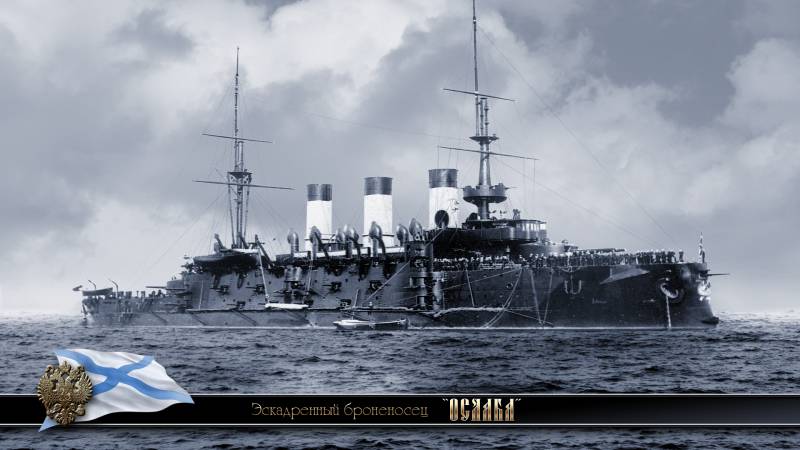


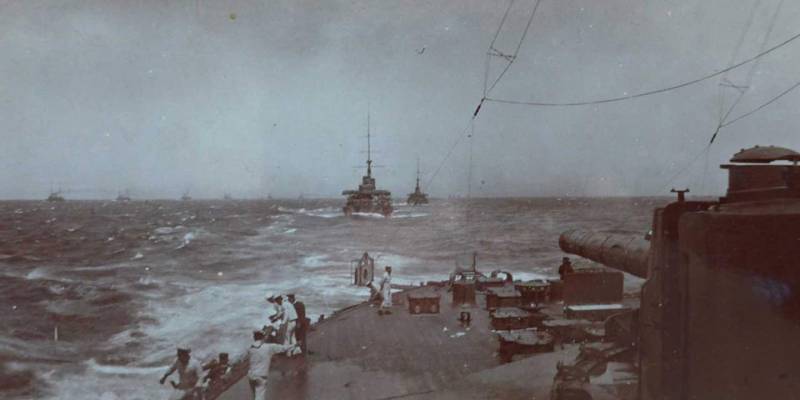
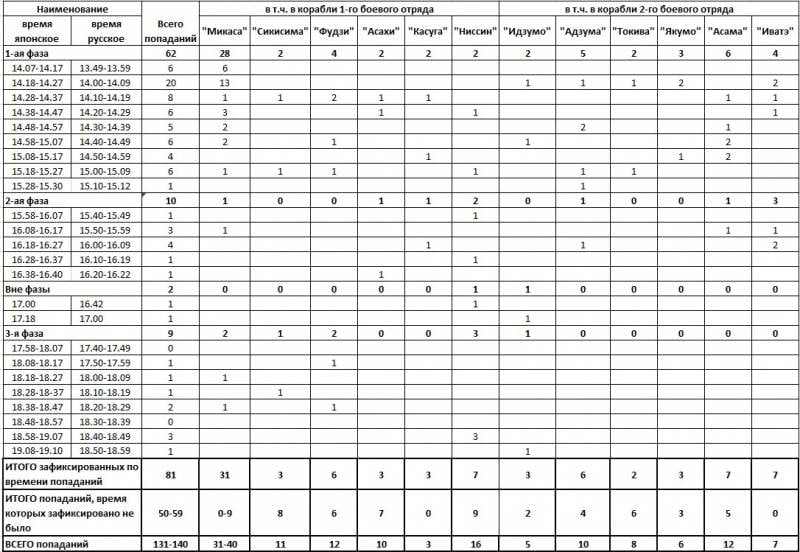
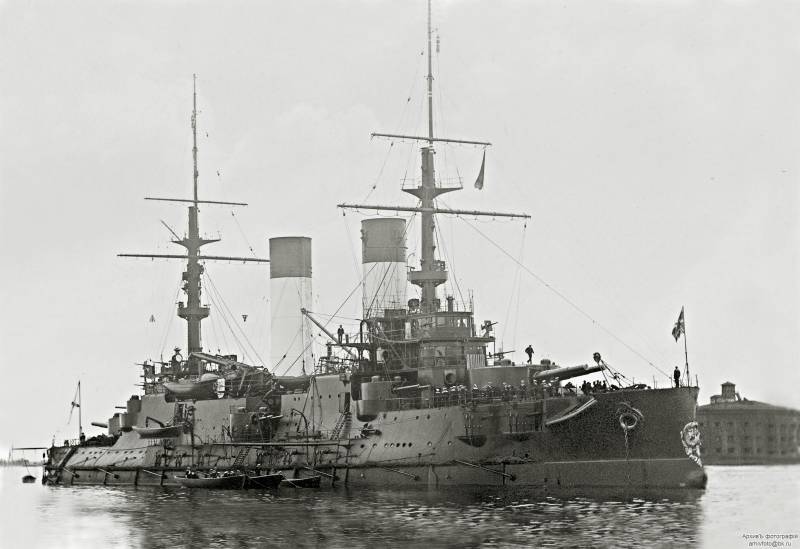
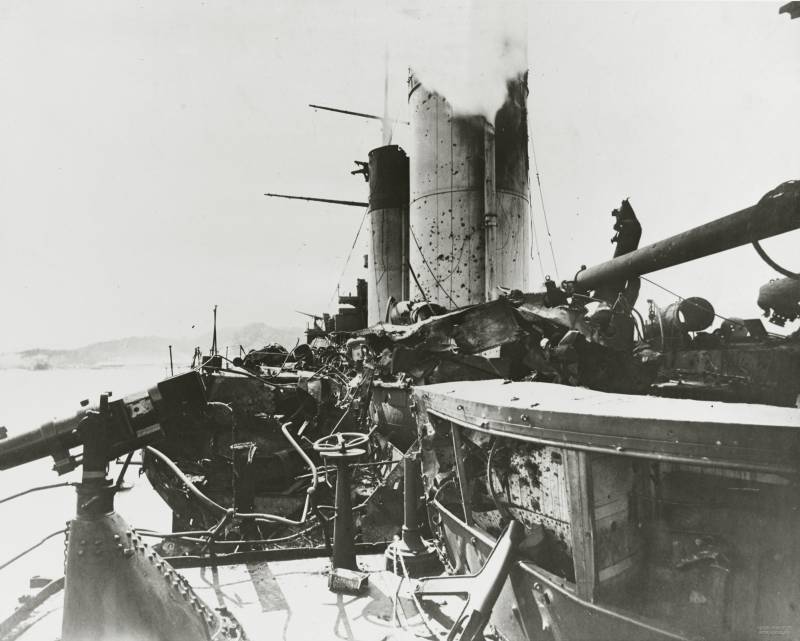
Information